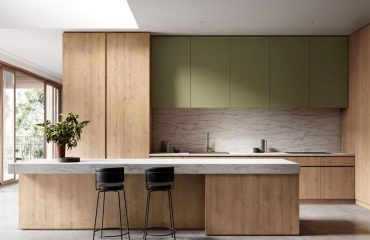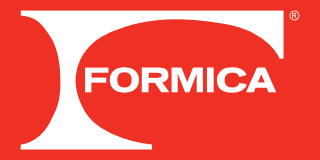With summer well and truly underway in Australia, the last thing you want to do is start cooking in a stuffy kitchen. Yet with the oven on, the pots boiling, and the kettle going it can become a necessary evil as you entertain friends and family over the holiday period. Fortunately, there are several ways you can keep your kitchen cool during these scorching summer months through some simple changes to your kitchen layout and design. Here are our top five design tips to create the ultimate summer kitchen to ward off the Australian heat!
Thermal Mass Timber

Lightweight materials such as timber have low thermal mass, making them an excellent resource in keeping your kitchen cool. Thermal mass refers to a materials ability to absorb and store heat. Timber has historically been used to provide thermal mass to buildings given its significant capacity for heat. Building with wood reduces temperature fluctuations in a living space as you are increasing the level of thermal mass, decreasing the chance of overheating a space that is not air conditioned and reducing energy usage if it is. Taking the time to utilise thermal mass accordingly can consequently improve the comfort levels in your home significantly over the summer months.
Tiled Floor

Tiled floor retains less heat than wooden flooring, making it the perfect relief during the Australian summer. Whereas wood has low thermal mass, high density materials like tiles require a lot of heat energy to change temperature. Plus, tile floor is highly practical for the kitchen space as its very easy to clean and comes in a range of different materials, sizes, and colours. Meaning you can find the right tile design to suit your desired aesthetic that will keep your kitchen cool and clean over the summer.
Benchtops

From both a practical and aesthetic perspective, benchtops are one of the most important features in a kitchen. Taking up a large portion of the space in your cooking area, your benchtops undoubtedly play a role in the heating and cooling of your kitchen space. If you favour high density materials like stone and concrete, then you benefit not only from the usability of their heat resistance when cooking, but also their cooling abilities. Although such materials are generally more expensive to install, you may wish to undergo the expense for the convenience and durability of these products. Especially if you’re looking to design a summer kitchen that will keep you cool during the hotter months.
Insulation

If you’re in the process of a kitchen renovation, then implementing insulation is also a vital method of keeping out the summer heat. Essentially, insulation acts as a barrier to heat, making your home warm during the winter and cool in the summer. A well-insulated kitchen can provide comfort year-round by reducing the need for extra heating and cooling. Naturally, the best time to install insulation is during construction as this is most economical and convenient. So, if you’re looking to renovate—or already in the process of renovations—then now is the time! To determine the appropriate level of insulation for your kitchen, make sure you consider the climatic conditions of where you live and consult a professional.
Passive Cooling

Implementing passive cooling is perhaps the most effective and low-cost tool to ward off the summer heat. Passive cooling refers to design techniques that focus on using elements such as air movement and thermal mass to cool the house. Such techniques can be applied to new homes and renovations, and involve tactics like choosing glazes for windows that will limit heat gain over the summer and having garden beds around the house to cool surrounding air. By taking the time to implement passive cooling techniques in your kitchen design you can be just as prepared for the hot Australian summers as for the chilly winters.










